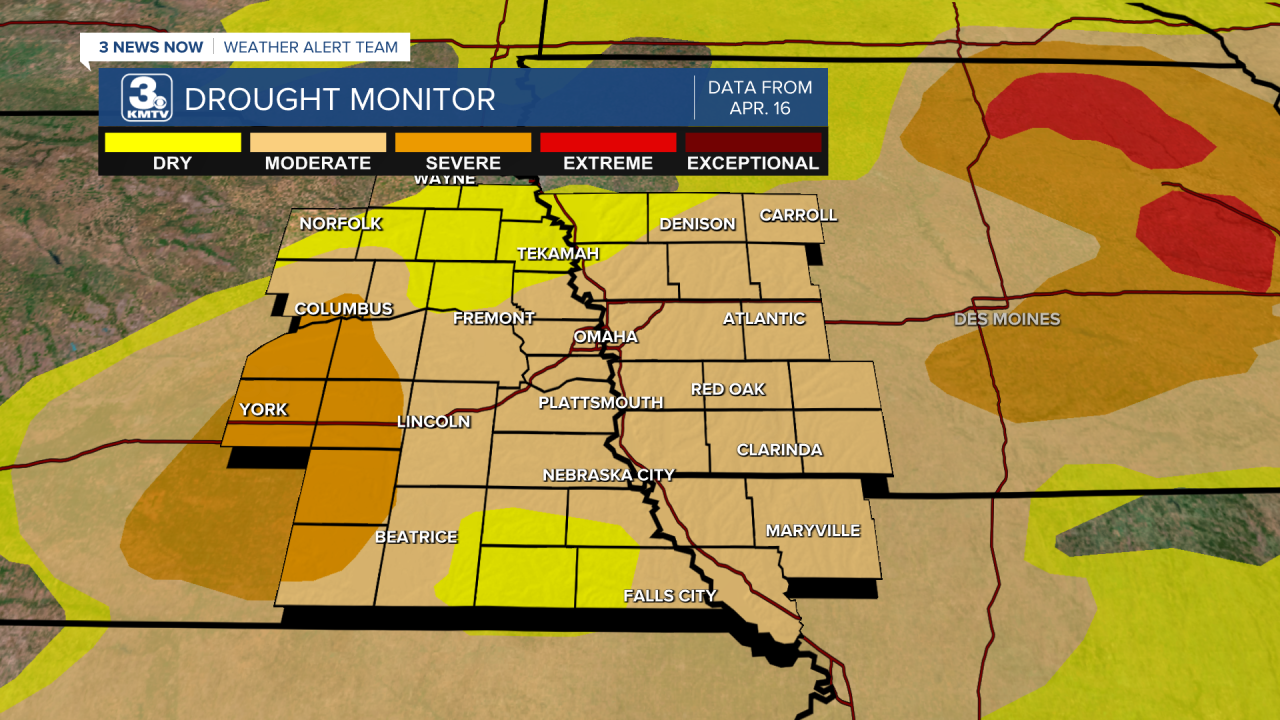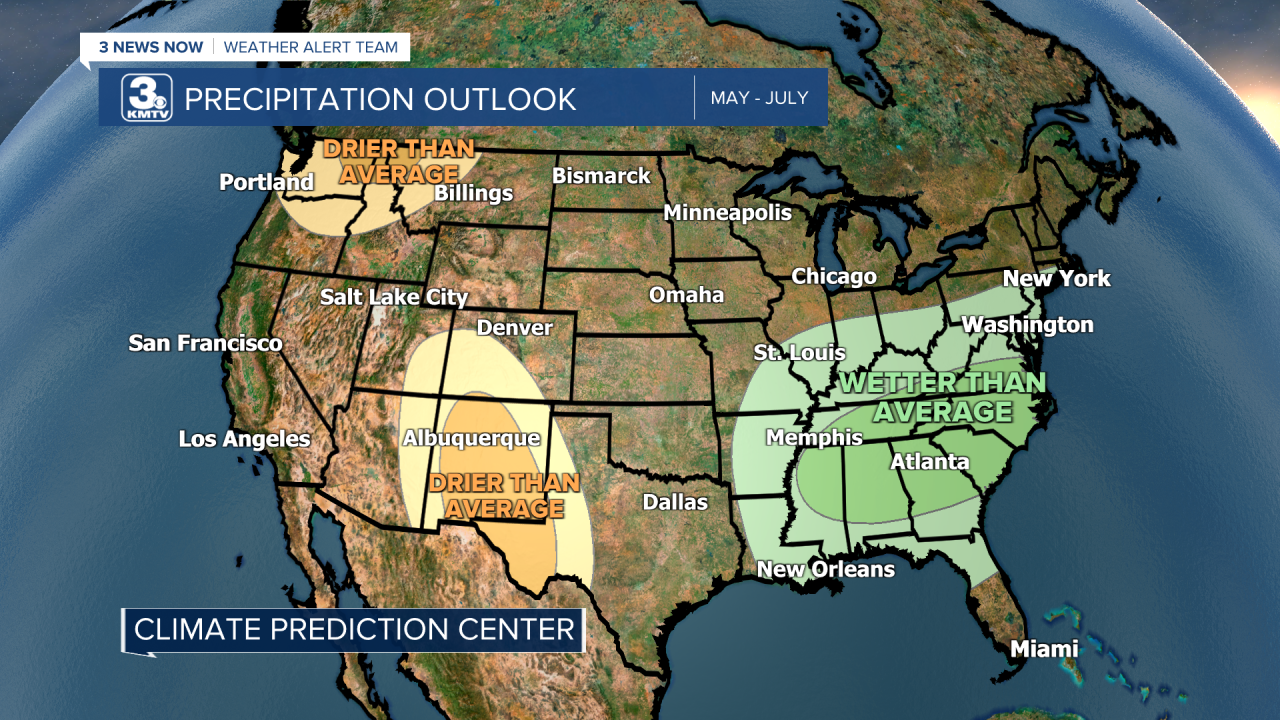Since the summer of 2022, eastern Nebraska and western Iowa have dealt with a drought that just will not go away. Although the worst of it came in late spring/early summer of 2023, we are still dealing with the drought in April 2024. Although much of western and central Nebraska is drought-free, the drought has expanded over Iowa and Missouri in that same time. So, what is the current state of the drought in April? Is there any good news from the recent rainfall in March into April? How much rain is needed to finally break the drought?

So far in 2024, we have been off/on for precipitation in relation to their monthly averages. January was a wet month, but that was mostly due to the back-to-back major snowstorms we saw in the second week. February was very dry, in fact it was one of the driest February's on record. March was wet, and so far April has been dry. When added up, we are about 1-2" shy of where the average is. That does NOT spell good news for the drought.

As of April 16, the latest drought monitor places the majority of our viewing area in the level 2 "moderate" drought category. This is an improvement from a few months ago, when most of us were in a level 3 "severe" and even level 4 "extreme" drought! For Columbus to York, Seward, Crete, and Fairbury the drought is still at the level 3 "severe" category. However, these were the locations that were once in the level 5 "exceptional" category, so even in that region there is improvement.

This begs the question, how much more rain do we need to fully break the drought? While we can not be exact, we can get a rough estimate based on current drought conditions and our seasonal precip. Here are the numbers to reduce the drought:
- Within one month: 5-7" or around 125-150% of our monthly average precip (Average: 4")
- Within 3 months: 13-15" or around 100-125% of our 3 month average precip (Average: 13")
- Within 6 months: 24" or around 100% of our 6 month average precip (Average: 24")
- Within one year: 29-31" or around 90% of our yearly average precip (Average: 31")
This means that to improve the drought we need several months of near-to-above average rainfall. Or, we would need one month of well-above average rainfall. Now, here are the numbers to eliminate the drought:
- Within one month: 9-11" or around 200-250% of our monthly average precip (Average: 4")
- Within 3 months: 18-19" or around 125-150% of our 3 month average precip (Average: 13")
- Within 6 months: 29" or around 120-130% of our 6 month average precip (Average: 24")
- Within one year: 34-36" or around 100-110% of our yearly average precip (Average: 31")
With this in mind, it is possible that we at least see some improvement in the drought heading into the spring and summer months. However, we still probably have many more months to go before we can completely say goodbye to the drought. Luckily, with the drought improvement seen over the year, the drought is more manageable this year.
So, what do long-range forecasts say about our rainfall over the next several months? According to the Climate Prediction Center, there is an equal chance of precipitation through the rest of Spring into the summer. This means that the probability of having a dry or wet few months is somewhat low, meaning we can possibly expect more seasonal conditions over the next few months.

Of course, long-range forecasts are not to be taken too literally, as patterns can change. For the short-term forecast, stay with KMTV for the latest on your forecasts!


